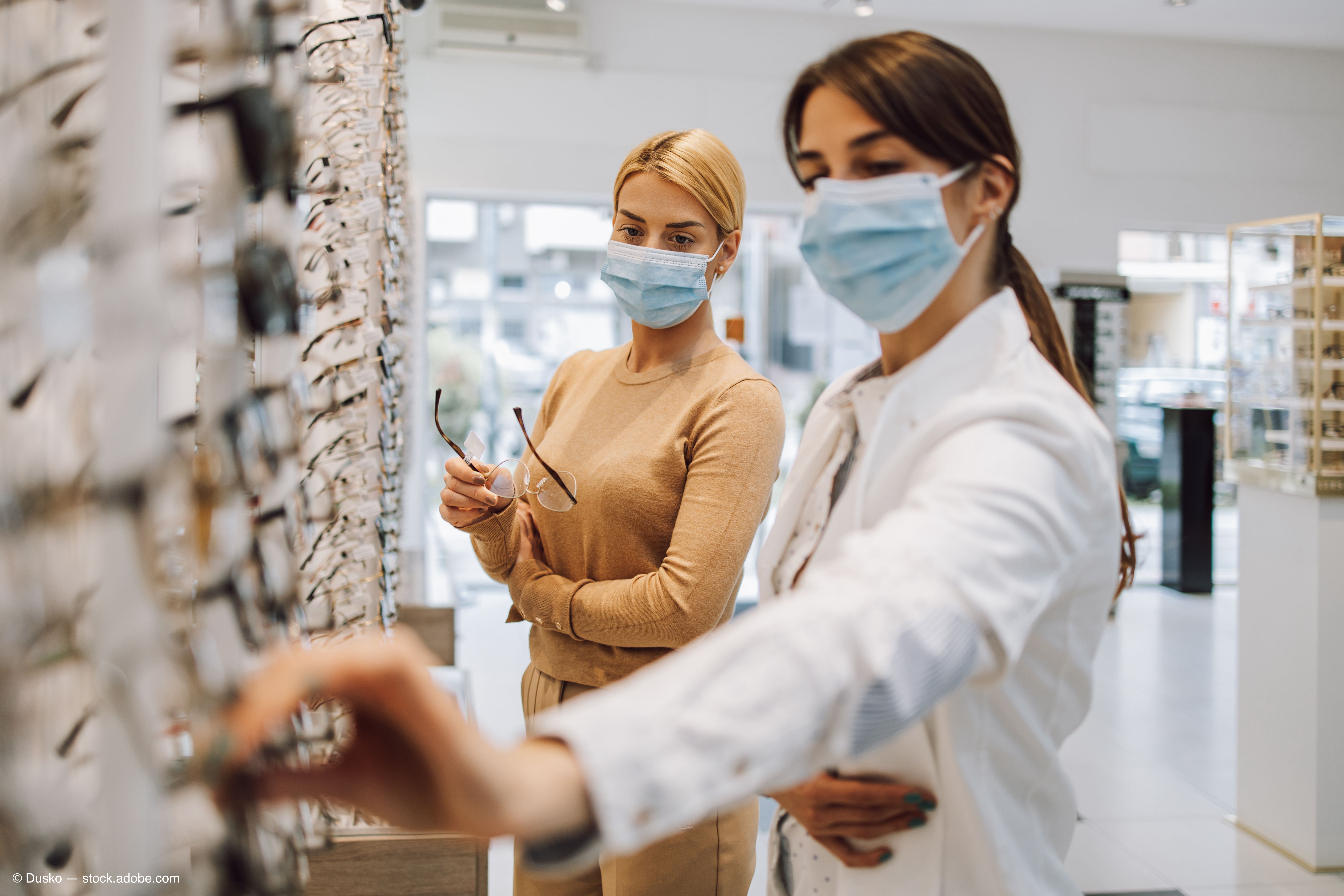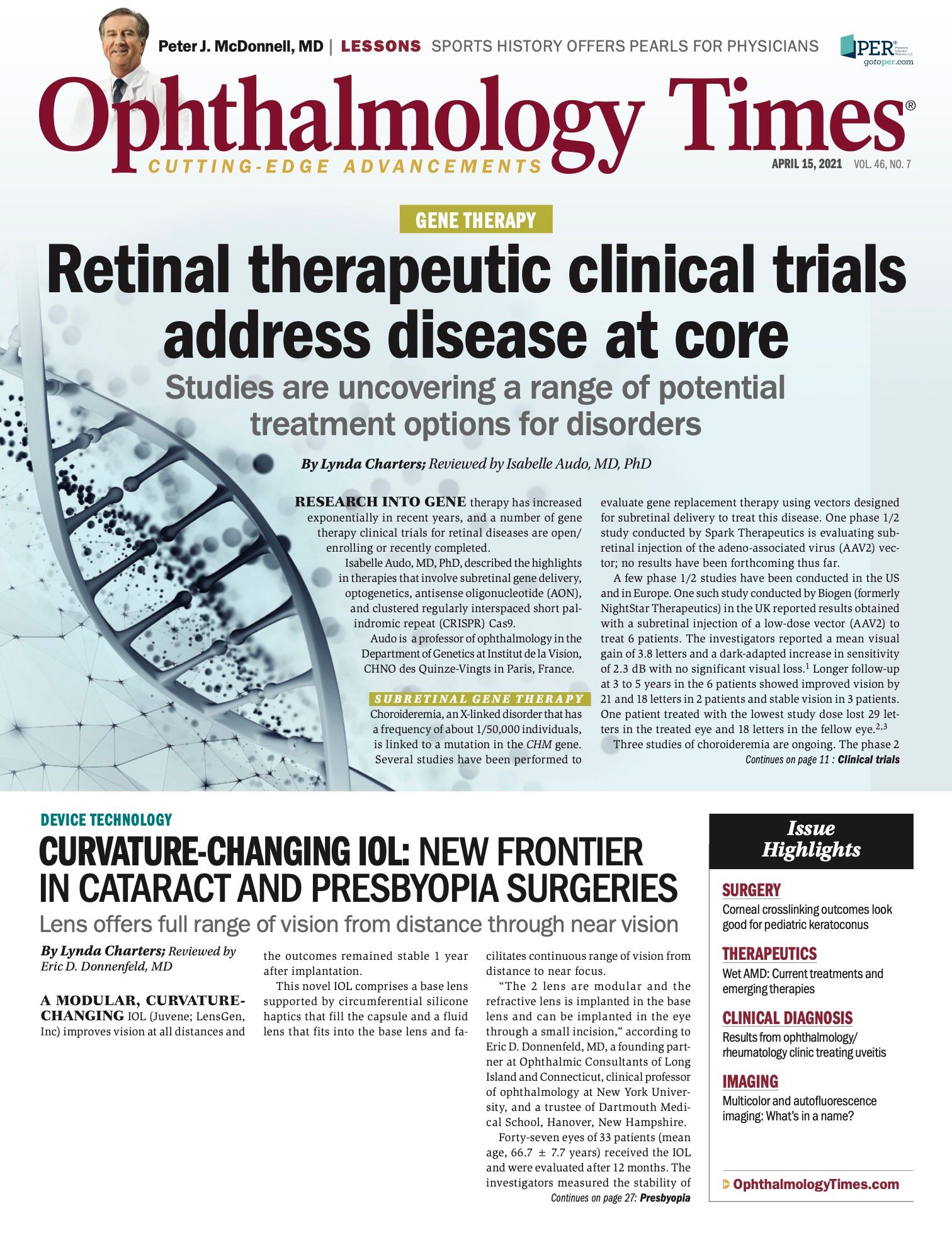News
Article
Digital Edition
Optical dispensary conversions
Author(s):
Practices can turn a moment of crisis into a win-win for all.

Special to Ophthalmology Times®
COVID-19 has left seemingly no business or industry untouched, the eye care sector included. Although deemed essential, many ophthalmologists’ offices nationwide made the decision to close except for emergencies during the height of the pandemic.
As with most businesses since reopening, eye care practices have been navigating uncharted territory, emerging from shutdown to a new normal in an unprecedented health crisis.
Related: Implementing COVID-19 safety protocols, guidelines in practice
For most eye care practices, this has meant incorporating new COVID-19–related safety protocols, from mask wearing and hand sanitizing to limiting patients and enforcing strict cleaning regimens.
For many, a dramatic uptick in business also has resulted from extended full or partial closures and consumer wariness about leaving home.
The resulting pent-up demand has left some eye care offices playing catch-up with a surge of patients and long overdue appointments in a condensed time frame.
Eye care practices are inundated with patient visits while simultaneously implementing necessary but often cumbersome new office procedures.
These rather unusual circumstances offer practices an opportunity to re-evaluate and adjust business and operations procedures to emerge stronger from the pandemic.
Related: PODCAST: Adjusting ophthalmology practice to a pandemic
For instance, an influx of eye care patients could make for an increasingly busy optical dispensary and effective revenue stream, but only with efficient operation.
Indeed, eye care practices are in a unique position to capitalize on changing procedures, extending them across all areas of the practice to make for improved operation, and hopefully convert eye care patients to optical dispensary customers, bolstering what can be a lucrative secondary revenue stream.
As patients continue to limit stops amid COVID-19, they will have a reason to consider your dispensary for eyewear purchases, rather than going elsewhere.
Appearance matters
The importance of visual appeal when it comes to increasing optical sales cannot be overemphasized.
Your dispensary should be eye-catching, attractive, clean, and well organized now more than ever, because during a pandemic people have heightened appreciation for neatness and cleanliness.
Related: Eyecare professionals advise on cleaning, disinfection guidelines to promote safety
Seating and other furniture should be comfortable, warm, inviting, and appropriately spaced. Photos of people wearing your glasses should be visible. Attractive ads and videos can be effectively included as part of your display, and any mirrors you use need to be flattering.
The goal is to make your shop a natural, connected arm of your practice—an attractive, alluring solution center for your patients’ needs.
Establish a handoff method
Establishing a seamless, professional handoff method for patients to go from doctor to optician is highly recommended and should not be overlooked. Some patients respond well to being invited to visit the optical dispensary.
For some, a walk-and-talk approach, in which doctors physically walk patients to dispensaries for a discussion of their needs, works well—but be sure to maintain appropriate social distancing.
Related: Pearls for drawing patients back to your practice
Amid COVID-19, a more modern approach may be having examination rooms connected via Zoom or other videoconferencing software so doctors can make a formal “e-troduction” between patient and optician.
The ideal transfer protocol will vary, but developing a consistent handoff method provides a warm, inviting atmosphere that patients are sure to appreciate, especially during a time when so much else seems in flux.
Know your demographics
When it comes to eyewear, it is important to know your demographics and adjust your optical dispensary inventory to match it.
Ensure you have enough variety so that the needs of each patient can be met. This means carrying a range of shapes, sizes, colors, and price points.
Related: Spotlighting telemedicine in the year of a pandemic
When it comes to price point, many practices today choose to offer a price-protection guarantee stating they will beat the price of any competitor for same or similar items whether that seller is another brick-and-mortar retailer or a spectacle e-tailer.
At the very least, eye practices need to be cognizant of the discount landscape and price certain frames accordingly.
It is also important to note that many customers want to own second and third pairs of glasses—ones they can keep in their cars or offices, for instance. This is yet another reason for maintaining inventory that varies considerably in style and price, because customers tend not to overindulge on spare pairs.
Boost customer service skills
In addition to properly guiding patients on frame selection, staff must have firm command of optical theory to confidently and accurately interpret the needs of patients based upon the Rx written.
Related: Preventing mask interference with visual field testing during the COVID-19 pandemic
There are many educational options available for optical teams, including a robust landscape of webinars and other online tools at a time when in-person classes and conferences are being postponed indefinitely.
Of note, it is important to motivate and require staff to work toward ABO certification and implement incentive programs to help them do so.
Here is where the client-servicing prowess of your optical staff is critical, because your opticians must provide the same level of service and expertise your patients have come to expect in your practice.
Only when this consistent, personalized service is achieved does your dispensary truly become a worthy extension of your practice, one that sets you apart from big box retailers.
Related: Glaucoma care after COVID-19: The Pan-American view
The impact of COVID-19 has unquestionably been dramatic and far-reaching, but these unprecedented circumstances can provide eye care practices with a rare opportunity to take a hard look at internal operations and meet a moment of widespread crisis with positive, even game-changing, transformation.
--
Mary Walker
p: 800/346-7486
Walker is vice president of business development at Vision Associates.

Newsletter
Don’t miss out—get Ophthalmology Times updates on the latest clinical advancements and expert interviews, straight to your inbox.




